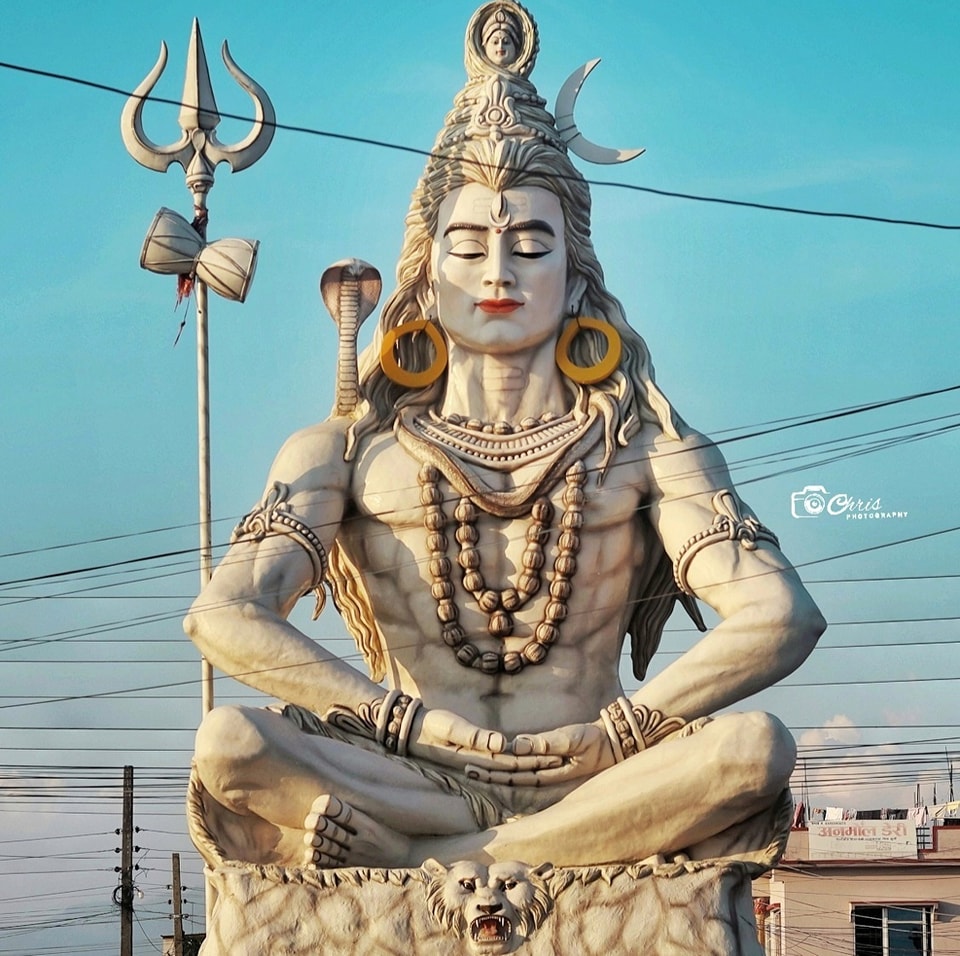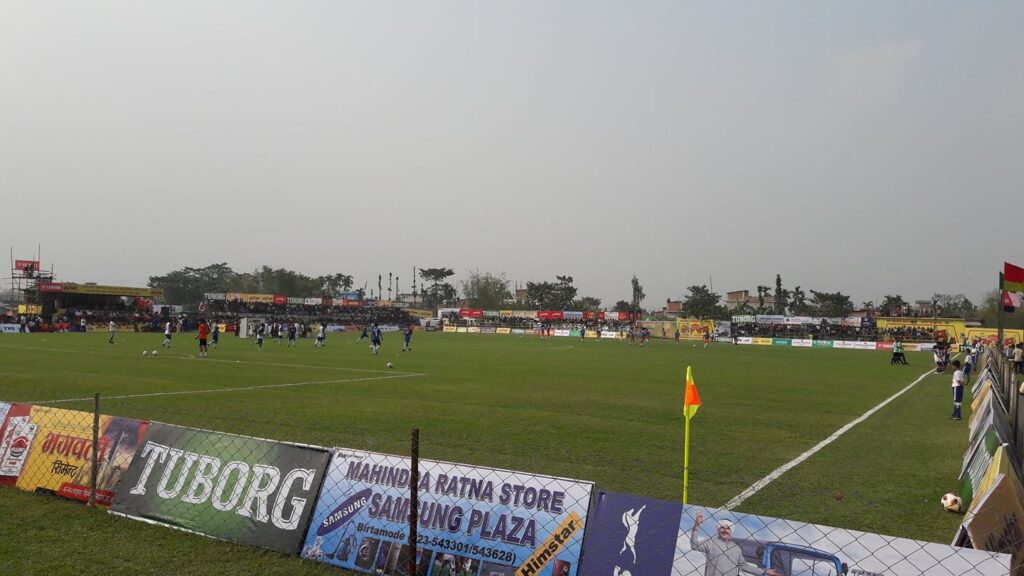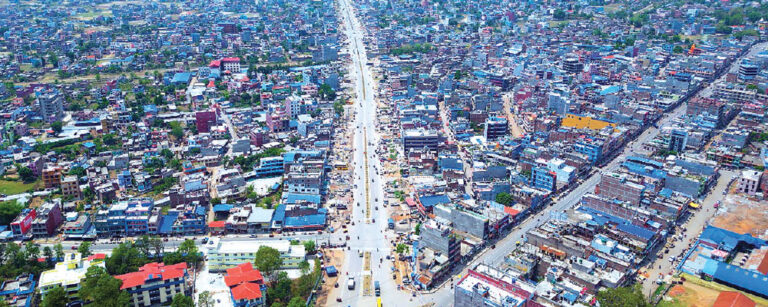An Unexplored Corner of Eastern Nepal
If you are lazy to read then watch the video about Jhapa District below.
Located in the heart of Eastern Nepal, Jhapa District is a mosaic of vibrant cultures, stunning natural landscapes, and rich history. Let’s embark on a fascinating journey to unearth the treasures that lie within this lesser-known corner of Nepal.

Diving Deeper: Jhapa’s Varied Landscape and Enchanting Climate
The geographical tapestry of Jhapa District is an artful blend of varied topography and climatic subtleties. Nestled in the Terai plains, towards the southeastern flank of Nepal, Jhapa shares its boundaries with the verdant districts of Ilam in the North and Morang in the West. To its south, it cozies up to the international border with India, further expanding the cultural and geographical influences that seep into the district.
The Serene Flow of Kankai River
Carving its path through this diverse landscape, the Kankai river becomes a defining geographic feature of the district. Like an artery pulsating with life, the river shapes the biodiversity and socio-economic aspects of the region. The Kankai river meanders through the plains of Jhapa, watering its agricultural lands and infusing life into the subtropical forests that adorn its banks. Its presence is deeply entwined with the everyday lives of the district’s inhabitants, offering a source of livelihood, sustenance, and recreation.
Subtropical Forests: A Reservoir of Biodiversity
A significant part of Jhapa’s geographical allure lies in its subtropical forests. These lush green expanses serve as a refuge for an array of flora and fauna, creating a vibrant tapestry of life that adds to the district’s natural wealth. From towering Sal trees to playful langurs, the forests house a myriad of species, each contributing to the delicate ecological balance of the region.
Flat, Fertile Plains: The Agricultural Backbone
Jhapa’s flat, fertile plains are the district’s agricultural powerhouse. Paddy fields stretch across the horizon, painting a picturesque vista of greenery, especially during the monsoon. The region’s soil, enriched by the sediments carried by the Kankai river, is highly fertile and conducive to agriculture, forming the backbone of Jhapa’s agrarian economy.

A Year-Round Destination: Tropical Monsoon Climate
The climate of Jhapa is another integral part of its geographical identity. The district experiences a tropical monsoon climate, characterized by distinct seasonal variations. Summers here are warm but bearable, while winters bring pleasant, cooler temperatures. The monsoons transform the landscape into a lush, green paradise, making Jhapa a year-round destination for locals and tourists alike.
As we explore further, the diverse geographical elements of Jhapa District reveal a land that’s as vibrant and versatile as its people, a district that’s truly a hidden gem in the heart of Eastern Nepal.
Celebrating Diversity: The Cultural Tapestry of Jhapa District
In the heart of Eastern Nepal, Jhapa is a cultural mosaic that showcases a blend of unique ethnicities, languages, and religions. With the cultural richness it embodies, Jhapa serves as an exemplar of Nepal’s celebrated diversity.
A Confluence of Ethnicities
Unraveling the cultural tapestry of Jhapa begins with exploring its mix of ethnic communities. Four major ethnic groups create a vibrant cultural palette – the Rajbanshi, Limbu, Dhimal, and Rai communities.
The Rajbanshis, primarily residing in the southern part of Jhapa, are known for their distinctive traditions, dances, and music. Limbus, largely settled in the hills, are famous for their martial history and their unique script, Kirat Sirijonga. Dhimals, an indigenous ethnic group, contribute to the district’s culture with their rich folklore and customs. The Rai community, with its varied subgroups, adds a unique blend of traditions and rituals to the local culture.

The Linguistic Symphony
Language, in Jhapa, is more than just a medium of communication – it’s an emblem of cultural identity. While Nepali is the lingua franca, you’ll hear a symphony of other languages, each resonating with its unique melody. Maithili, Limbu, and Rajbanshi form the primary dialects, creating a rich linguistic tapestry that narrates tales of the district’s diverse heritage.
Harmony in Diversity: Religion
Religious practices in Jhapa reflect the district’s ethos of harmonious coexistence. The major religions include Hinduism, Buddhism, Kirat Mundhum, and Christianity. Hindu temples and Buddhist monasteries dot the district, radiating a sense of peace and spiritual solace. The indigenous Kirat Mundhum religion, with its unique rituals and reverence for nature, adds another dimension to the religious landscape of Jhapa.
Laying the Foundation: Education and Literacy in Jhapa
The beacon of education burns bright in Jhapa, illuminating the path towards progress and prosperity. The district takes immense pride in its literacy rate, a testament to the importance it places on education.

Championing Education
Jhapa’s commitment to education is visible in its array of educational institutions that span all levels – from primary schools to colleges. These institutions strive to deliver quality education, equipping the district’s youth with knowledge and skills for a better future.
In addition to formal education, Jhapa also encourages vocational training and adult literacy programs, further strengthening its educational framework. These efforts underline the belief that education is a potent tool for change, empowering individuals and uplifting communities.
Through its rich culture and steadfast focus on education, Jhapa District shines as a beacon of diversity and progress in the landscape of Eastern Nepal.

Steering the Helm: District Administration and Local Governance in Jhapa
Jhapa District, with its unique blend of natural beauty and cultural diversity, thrives under a well-structured administrative system. Rooted in a combination of modern administrative practices and traditional societal structures, Jhapa’s governance provides a unique insight into the district’s day-to-day life and functioning.
Bhadrapur: The Administrative Nucleus
At the administrative heart of Jhapa lies Bhadrapur, a bustling town renowned for its historical significance and rapid modernization. Bhadrapur serves not just as the district headquarter but also as a pivotal hub for trade and commerce. This town pulsates with life and energy, orchestrating the administrative melody that resounds across the district.
The Structure: Municipalities and Rural Municipalities
For effective governance and development, Jhapa is divided into 15 local units. This includes eight municipalities – Bhadrapur, Birtamod, Damak, Arjundhara, Shivasatakshi, Gauradaha, Kankai, and Mechinagar, and seven rural municipalities – Jhapa, Kachankawal, Haldibari, Buddhashanti, Barhadashi, Kamal, and Gaurigunj.
Each municipality and rural municipality, governed by a mayor and a council of members, plays a crucial role in implementing policies and overseeing development projects. The governance model ensures that the administration’s benefits percolate down to the smallest unit, ensuring comprehensive development and efficient public service delivery.

A Blend of Tradition and Modernity
The administration in Jhapa is a blend of modern systems and traditional practices. While the district follows modern administrative procedures for governance, it also respects and incorporates traditional societal norms and communal practices. This fusion creates a unique societal structure, underlining Jhapa’s capacity to balance progress with heritage.
Overall, the administrative machinery of Jhapa District functions with a commitment to fostering growth, enhancing living conditions, and safeguarding the rich cultural heritage that defines this corner of Eastern Nepal.
The Odyssey Begins: Unearthing the Gems of Jhapa
The journey through Jhapa is akin to turning the pages of a captivating travelogue. A story told in verdant landscapes, whispered by ancient monuments, and shared by the gushing river. From serene riversides to vibrant picnic spots, Jhapa’s attractions weave a rich tapestry of experiences. Let’s delve into some of these gems that make Jhapa an irresistible destination.

Kankai River: The Serpentine Spectacle
The first stop on this journey is the Kankai River, the life-giving artery of Jhapa. As it serenely weaves its way across the district, the river offers stunning landscapes that beckon visitors for a moment of tranquility. The river banks, shaded by lush trees, provide the perfect retreat for nature lovers. As the river flows, it seems to hum tales of the culture, geography, and life in Jhapa. A visit to Kankai River promises a rejuvenating experience, a moment of solitude amid the ever-moving rush of life.
Kichchakbadh Mukti Smarak: A Tribute to History
Next, we journey into the heart of history at the Kichchakbadh Mukti Smarak. This historical park is a tribute to the legendary Mahabharata war. According to local lore, Kichaka, a character from the epic, was killed here. Today, a statue of Draupadi, a pivotal character from the Mahabharata, stands tall in the park. The park’s serene environment is occasionally punctuated by the whispers of the past, offering a unique blend of history and tranquility. Whether you’re a history enthusiast or a seeker of peace, Kichchakbadh Mukti Smarak has something to offer.

Domukha: A Symphony of Joy and Togetherness
Finally, we find ourselves amid the laughter and chatter of Domukha, a popular picnic spot. The verdant greenery of the place, coupled with the symphony of bird calls, makes it a favorite among families and groups. The picnic spot is not just about fun and food; it’s about togetherness. Here, families unite, friends meet, and memories are woven amidst the canvas of Jhapa’s natural beauty.
Each of these places, unique in its appeal, shares a common thread – they each offer a glimpse into the soul of Jhapa. They paint a picture of a district that’s not just geographically diverse but also rich in history, culture, and communal harmony. As we turn the final page of this travelogue, we find that the journey through Jhapa is not just about discovering places; it’s about discovering experiences, stories, and a slice of Nepal’s vibrant heart.

Conclusion
Jhapa District, with its enchanting blend of culture, nature, and history, is a testament to the rich diversity of Nepal. It beckons the curious, the seekers, and the lovers of authenticity. So, the next time you yearn for an escape off the beaten track, remember Jhapa is waiting to welcome you.
Frequently Asked Questions
Jhapa District experiences a tropical monsoon climate with warm summers and pleasant winters.
What languages are spoken in Jhapa District?
The major languages spoken in Jhapa District are Nepali, Maithili, Limbu, and Rajbanshi.
Some of the main attractions in Jhapa District are Kankai River, Kichchakbadh Mukti Smarak, and Domukha picnic spot.
While the exact literacy rate is not provided, Jhapa District is known for its numerous educational institutions and emphasis on education.
The major ethnic communities in Jhapa District include Rajbanshi, Limbu, Dhimal, and Rai.
More…
To read about different places visit thesandeshneupane.com you can find article in Nepali language here.
Watch videos of different places on YouTube channel named as THE SANDESH NEUPANE or click here.
All the photo copyright to the respective owner. For any querry or anything related to copyright mail me with proof at sandesh@thesandeshneupane.com







